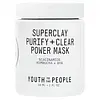What's inside
What's inside
 Key Ingredients
Key Ingredients

 Benefits
Benefits

 Concerns
Concerns

 Ingredients Side-by-side
Ingredients Side-by-side

Carthamus Tinctorius Seed Oil
MaskingSucrose
HumectantSilica
AbrasiveSesamum Indicum Seed Oil
EmollientArgania Spinosa Kernel Oil
EmollientCaprylic/Capric Triglyceride
MaskingHydrogenated Vegetable Oil
EmollientTetrahexyldecyl Ascorbate
AntioxidantRosa Damascena Flower Oil
MaskingRosa Gallica Flower Powder
Skin ConditioningTocopherol
AntioxidantPersea Gratissima Oil
Skin ConditioningVitis Vinifera Seed Oil
EmollientTocopheryl Acetate
AntioxidantParfum
MaskingPhenoxyethanol
PreservativeEthylhexylglycerin
Skin ConditioningCarthamus Tinctorius Seed Oil, Sucrose, Silica, Sesamum Indicum Seed Oil, Argania Spinosa Kernel Oil, Caprylic/Capric Triglyceride, Hydrogenated Vegetable Oil, Tetrahexyldecyl Ascorbate, Rosa Damascena Flower Oil, Rosa Gallica Flower Powder, Tocopherol, Persea Gratissima Oil, Vitis Vinifera Seed Oil, Tocopheryl Acetate, Parfum, Phenoxyethanol, Ethylhexylglycerin
Water
Skin ConditioningKaolin
AbrasiveStearyl Alcohol
EmollientPropanediol
SolventGlycerin
HumectantGlyceryl Stearate
EmollientNiacinamide
SmoothingOryza Sativa Starch
AbsorbentBentonite
AbsorbentCetyl Alcohol
EmollientMagnesium Aluminum Silicate
AbsorbentMontmorillonite
AbsorbentIllite
AbrasiveCalcite
Skin ConditioningSalicylic Acid
MaskingSalix Purpurea Bark Extract
Skin ConditioningSaccharomyces/Xylinum/Black Tea Ferment
Skin ConditioningAllantoin
Skin ConditioningCarthamus Tinctorius Seed Oil
MaskingIndocyanine Green
UV AbsorberAloe Barbadensis Leaf Juice
Skin ConditioningGlyceryl Acrylate/Acrylic Acid Copolymer
HumectantCetearyl Olivate
Sorbitan Olivate
EmulsifyingTriticum Aestivum Leaf Extract
AntioxidantLactic Acid
BufferingSorbitan Stearate
EmulsifyingCaprylhydroxamic Acid
Charcoal Powder
AbrasiveSodium Citrate
Buffering1,2-Hexanediol
Skin ConditioningPhenoxyethanol
PreservativeQuartz
AbrasiveSilica
AbrasiveSodium Benzoate
MaskingPotassium Sorbate
PreservativeMaltodextrin
AbsorbentGardenia Florida Fruit Extract
Skin ConditioningWater, Kaolin, Stearyl Alcohol, Propanediol, Glycerin, Glyceryl Stearate, Niacinamide, Oryza Sativa Starch, Bentonite, Cetyl Alcohol, Magnesium Aluminum Silicate, Montmorillonite, Illite, Calcite, Salicylic Acid, Salix Purpurea Bark Extract, Saccharomyces/Xylinum/Black Tea Ferment, Allantoin, Carthamus Tinctorius Seed Oil, Indocyanine Green, Aloe Barbadensis Leaf Juice, Glyceryl Acrylate/Acrylic Acid Copolymer, Cetearyl Olivate, Sorbitan Olivate, Triticum Aestivum Leaf Extract, Lactic Acid, Sorbitan Stearate, Caprylhydroxamic Acid, Charcoal Powder, Sodium Citrate, 1,2-Hexanediol, Phenoxyethanol, Quartz, Silica, Sodium Benzoate, Potassium Sorbate, Maltodextrin, Gardenia Florida Fruit Extract
 Reviews
Reviews

Alternatives
Ingredients Explained
These ingredients are found in both products.
Ingredients higher up in an ingredient list are typically present in a larger amount.
Carthamus tinctorius seed oil comes from safflower, one of humanity's oldest crops.
Safflower seed oil contains a high percentage of linoleic acid and oleic acid. It also contains Vitamin E. These three components are effective moisturizers.
Vitamin E helps nourish your skin's lipid barrier. It is also a potent antioxidant. Antioxidants help fight free-radical molecules, or unstable molecules that may damage your skin cells.
Due to its high fatty acid content, this ingredient may not be malassezia folliculitis safe.
Thoughout history, safflower has been used for dying fabrics and in food as a saffron substitute.
Learn more about Carthamus Tinctorius Seed OilPhenoxyethanol is a preservative that has germicide, antimicrobial, and aromatic properties. Studies show that phenoxyethanol can prevent microbial growth. By itself, it has a scent that is similar to that of a rose.
It's often used in formulations along with Caprylyl Glycol to preserve the shelf life of products.
Silica, also known as silicon dioxide, is a naturally occurring mineral. It is used as a fine, spherical, and porous powder in cosmetics.
Though it has exfoliant properties, the function of silica varies depending on the product.
The unique structure of silica enhances the spreadability and adds smoothness, making it a great texture enhancer.
It is also used as an active carrier, emulsifier, and mattifier due to its ability to absorb excess oil.
In some products, tiny microneedles called spicules are made from silica or hydrolyzed sponge. When you rub them in, they lightly polish away dead skin layers and enhance the penetration of active ingredients.
Learn more about Silica